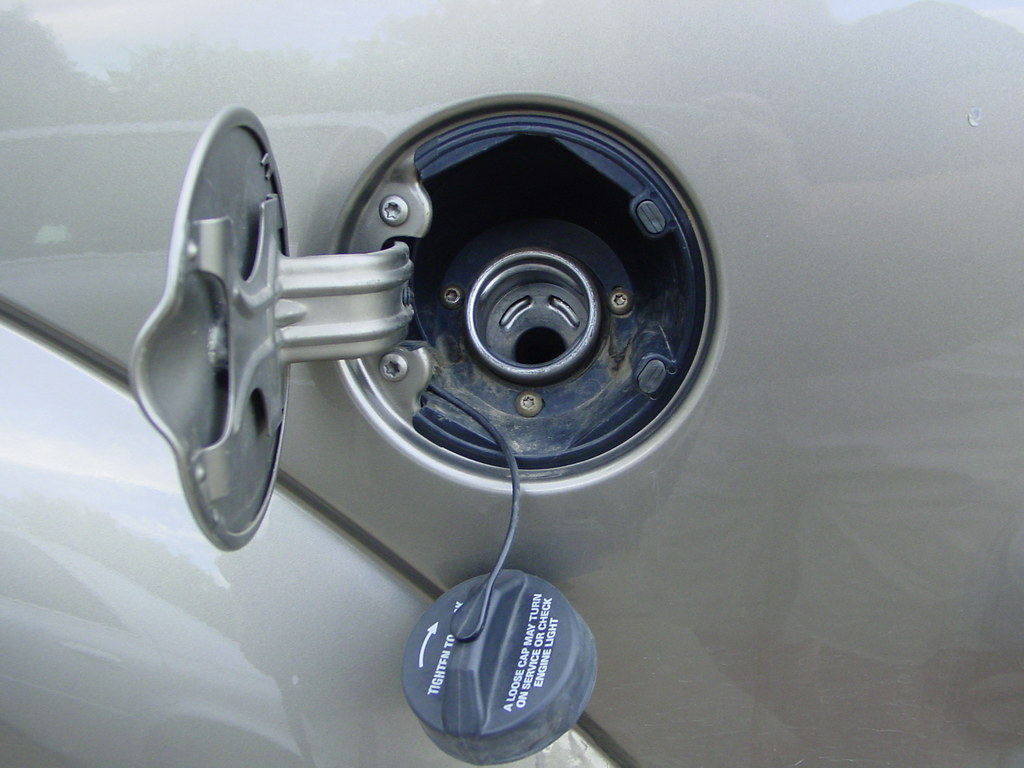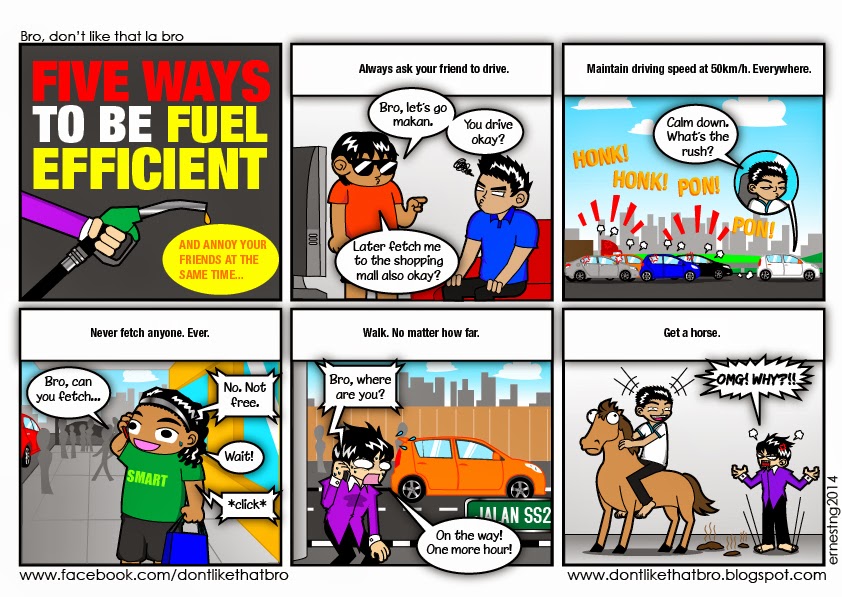
American families are feeling the pinch at the pump, spending an average of $5,000 a year on gas. Whether you’re commuting to work, embarking on a cross-country adventure, or simply running daily errands, those fuel costs can quickly spiral if you’re not armed with the right strategies. With gas prices fluctuating widely, it’s easy to feel overwhelmed by the quest for savings, but the good news is that significantly reducing your gas expenses is entirely within reach. It’s a little mind-blowing how much money we unknowingly waste on fuel, failing to realize how straightforward it is to achieve better gas mileage. Even seemingly minor actions, such as properly inflating your tires or removing that seldom-used bike rack, can individually contribute an extra mile or two per gallon.
This article isn’t about magical quick fixes or questionable additives; it’s about providing you with direct, actionable advice, tips, and hacks that you can implement immediately to solve the everyday problem of high fuel consumption. We’ve lifted the hood on what gas-saving tips truly go the distance and which ones are simply a bust, drawing on expert insights to empower you with practical knowledge. By adopting a few smart strategies and shedding some common misconceptions, you can drastically reduce your gas costs and put more money back into your wallet. Let’s dive into the tangible ways you can get the most out of every gallon.
From adjusting your driving style to understanding your vehicle’s needs, countless factors influence your car’s fuel efficiency. Some tips are legitimate game-changers, while others are simply old wives’ tales that no longer apply to modern vehicles or, worse, can even be detrimental. We’ll empower you with the knowledge to discern between effective hacks and those that may waste your precious time and money. Here are some of the fundamental strategies that really work, combined with a few pervasive myths that deserve to be debunked.
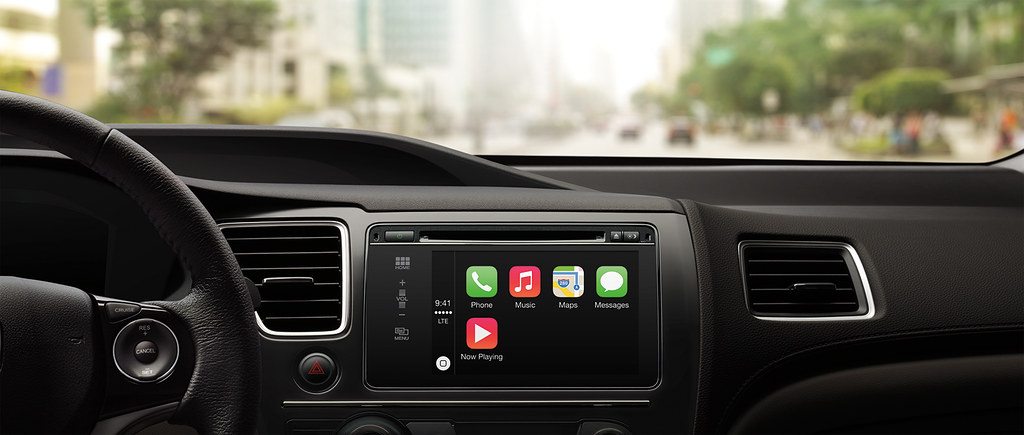
1. **Adopt Smooth Driving Habits** Aggressive driving, characterized by sudden accelerations and hard braking, is a notorious gas guzzler. Every time you stomp on the gas pedal, your engine is working harder, consuming fuel at an accelerated rate. This isn’t just about speed; it’s about consistency. Patrick De Haan, head of petroleum analysis at Gas Buddy, highlights that “if people drove at a slower pace of acceleration and avoided racing through a red light, it would help them prevent burning through gas and using energy.” The more you step on the throttle, the more gas you use, and this jerky, aggressive approach not only depletes your fuel tank faster but also puts extra strain on your brakes and engine components.
Instead, cultivate a smooth, gentle driving style. When approaching a stoplight, try to gently coast to a complete stop rather than slamming on your brakes at the last moment. Similarly, when the light turns green, gently accelerate, resisting the urge to ‘gun it’. Brandon Hartman, founder of RV Heating Warehouse, emphasizes that “jerky or aggressive driving, with sudden acceleration and hard braking, makes the engine work harder and is a sure way to lower your gas mileage.” This smooth approach is not only better for your wallet but also for the longevity of your vehicle’s critical systems.
Furthermore, practice what experts call ‘predictive driving.’ This involves looking a few steps ahead, especially on the highway, to anticipate changes in traffic flow, upcoming obstacles, or slower-moving vehicles before you have to react abruptly. Frank Bisciotti, editor-in-chief at RealTruck, notes that “this sort of consistent cruising avoids unnecessary braking and acceleration and thus reduces fuel consumption.” By anticipating and reacting smoothly, you maintain momentum and keep your engine working efficiently, which in turn significantly reduces your fuel consumption. Aggressive driving, according to the U.S. Department of Energy’s FuelEconomy.gov, can lower gas mileage by 15% to 30% on the highway and between 10% and 40% when navigating city stop-and-go traffic.
Read more about: Beyond the Quarter-Million Mark: Our Shortlist of Cars Engineered for Extreme Longevity

2. **Optimize Speed and Utilize Cruise Control** Maintaining a consistent, moderate speed is paramount for fuel efficiency. Vehicles are most efficient when driven between 55 and 60 miles per hour; anything above that speed starts to significantly deplete a car’s efficiency. Chris “Moose” Pyle, an automotive expert with JustAnswer, provides compelling numbers: increasing your speed from 55 to 65 mph increases drag by 36 percent. He illustrates that driving 100 miles at 70 mph takes 1 hour and 25 minutes, but doing the same stretch at 65 mph takes just seven minutes longer. If your car gets 20 mpg at 70 and 25 at 60, and gas is $5 a gallon, you save $5 during those extra seven minutes, which “comes out to be like $42 an hour, so driving slower is a good-paying job.”
The easiest way to maintain that constant, fuel-efficient speed, particularly on flat roads with no stops like a highway, is by using cruise control. De Haan states, “Cruise control is much more effective than a human is at maintaining speed and can help save fuel.” It prevents the constant small adjustments in acceleration and deceleration that humans unconsciously make, which can subtly waste fuel. By locking into an optimal speed, cruise control ensures your engine operates at its most efficient RPMs for extended periods.
However, there’s a crucial caveat: always turn off cruise control when you’re in a hilly area. As Pyle explains, “The car does not know if you are going uphill — it only knows you want to do X speed, so it will apply more and more throttle to maintain that speed.” This can lead to excessive fuel consumption as the engine overcompensates. Instead, control the throttle by foot and allow your speed to naturally drop a few miles per hour on the uphill incline. This seemingly minor adjustment can “result in saving a few ounces of fuel per hill,” adding up to noticeable savings over a long, hilly drive.
Read more about: The Engines That Defined an Era: From Historic Roars to Modern Thunder, Discover the Ultimate Muscle Car Powerhouses

3. **Minimize Idling** It’s a common misconception that turning your car off and restarting it uses more gas than letting it idle. Modern vehicles are designed for efficient startup, making it a viable gas-saving strategy to switch off your engine during prolonged stops. Linda Gaines, a transportation systems analyst for the Argonne National Laboratory, recommends turning off your car if it will be idling for 10 seconds or longer. Not only does this save on gas, but it also contributes to reducing carbon dioxide emissions, making it an environmentally conscious choice.
Many newer cars now come equipped with start-stop technology, which automatically shuts down the engine when the vehicle is stationary, precisely to reduce wasted fuel. As Ralph Robert, an expert writer for the Way.com app, points out, “Idling is not serving any purpose other than creating more pollution. In fact, idling your car uses more fuel than it takes to turn off and restart your car.” This is a simple yet highly effective hack, especially for city driving where traffic lights and congestion often lead to extended periods of inactivity.
A common concern is the potential wear and tear on the starter motor from frequent turning on and off. Gaines reassures drivers that “today’s starters are more robust than those in older cars.” Unless you’re revving up more than 10 times a day, “the starter motor is unlikely to need to be replaced during the vehicle’s life.” However, she cautions against turning your car on and off repeatedly in stop-and-go traffic, as “driving safely means being able to respond quickly to traffic conditions,” which is compromised by constant engine cycling in dynamic situations.
Read more about: The Hidden Hazards: 12 Common Driving Laws You’re Likely Breaking Without Realizing It

4. **Manage Vehicle Aerodynamics and Weight** Your car’s weight and how it cuts through the air play a significant role in its fuel efficiency. The heavier your car, the more fuel it uses, and this applies to anything you’re carrying or hauling, too. According to the U.S. Department of Energy, your fuel efficiency decreases by 1% for every 100 pounds of additional weight in your car. This means that leaving unnecessary items in your trunk or back seat can subtly, yet consistently, eat into your gas mileage. Brandon Hartman advises, “Be diligent about not leaving items on the car’s roof or trunk,” as “heavy cargo increases the amount of power your car needs to move.”
Beyond static weight, external accessories can drastically impact your car’s aerodynamics. Large luggage racks, cargo pods, and even bicycle or ski racks, when not in use, create significant wind resistance. De Haan advises taking these off when you’re not using them to boost your car’s aerodynamics. Frank Bisciotti suggests that “swapping a heavy, fixed rack for a sleek, retractable tonneau can reduce drag and save fuel.” While smaller bicycle and ski racks might be okay to leave on, their impact becomes more pronounced at higher speeds, where wind resistance becomes a dominant factor in fuel consumption.
An often-overlooked component is the air dam, sometimes called a spoiler, located on the front underside of your car. If this plastic component is broken or missing, it can reduce your gas mileage. The air dam is designed to literally dam off airflow to the undercarriage of your car, forcing the air up and over the hood. This helps your car cut through the air with less drag. It also increases airflow to the A/C condenser and radiator, which can reduce the load on your car’s electrical system. Ensuring this small part is intact can contribute to maintaining your car’s designed aerodynamic efficiency.
Read more about: From Anemic to Awkward: Unmasking 15 Muscle Cars That Truly Missed the Mark – And Why We Can’t Forget Them

5. **Maintain Proper Tire Pressure** Properly inflated tires are one of the simplest yet most impactful ways to improve your car’s gas mileage, potentially boosting it by up to 3%, according to the Energy Department. More than a quarter of passenger vehicles have at least one underinflated tire, and this seemingly minor issue creates increased rolling resistance, forcing your engine to work harder to move the car. This can cost you hundreds of dollars in fuel annually and also causes your tires to wear out more quickly, leading to premature replacement.
Even a slight underinflation can significantly impact fuel economy; for every 1 PSI your tires are underinflated, you could lose about 0.2% of your fuel efficiency. Patrick De Haan notes that letting your tire pressure drop below 25 psi can cause an increase in friction, compelling the engine to expend more effort and delivering fewer miles per gallon. The good news is that most modern cars will alert you when a tire is low through the tire pressure monitoring system (TPMS) light, which typically looks like parentheses with an exclamation mark or dot in the middle on your dashboard.
While proper inflation is key, avoid the myth of overinflating your tires to decrease resistance. John Vorisek, founder at Repair Surge, points out that while underinflation might provide a softer ride, it jeopardizes safety by reducing handling and increasing the risk of blowouts. Conversely, overinflating, even by as little as 10 pounds per square inch over the manufacturer’s recommendation, narrows the “contact patch” where the tire meets the road. This leads to less traction, a greater braking distance, and accelerated wear on the tires themselves, ultimately negating any negligible fuel savings and creating significant safety hazards. Always adhere to the recommended pressure found on the decal inside the driver’s door.
Read more about: Tricolor’s $200M Fraud: Unpacking the Collapse of a Subprime Auto Giant and Its Ripple Effects on US Banking

6. **Plan Routes and Combine Trips** Efficient trip planning is a powerful, often overlooked, strategy for saving gas. Instead of making multiple, disjointed trips throughout the day or week, bundle your errands to reduce the number of times you hit the road. For instance, if you have several stops to make across town, plan a single, logical route that covers all of them efficiently, rather than driving back and forth. Your car’s engine is more efficient when it’s warmed up, so doing everything in one longer trip is more fuel-efficient than several short trips on different days where the engine has to warm up repeatedly.
Using mapping tools and gas price tracking apps can significantly enhance your planning. Apps like AAA Mobile, AAA TripTik, GasBuddy, and Gas Guru can help you locate gas stations along your route and compare fuel prices, ensuring you fill up at the cheapest available spot. The AAA Mobile app, for example, shows you more than 85,000 gas stations across the U.S. with updated fuel prices, making it stress-free to find the best deals and avoid driving out of your way to save a few cents, which often results in spending more gas than you save.
Beyond combining errands, consider alternatives for your daily commute. Walking, biking, carpooling, or utilizing public transit not only slashes your gas expenses but also reduces your car’s mileage and benefits the environment. If carpooling, ensure it’s genuinely efficient: driving fewer cars to and from activities cuts down on per-person fuel consumption. However, resist the temptation to drive significantly out of your way to pick up a carpool buddy; if you’re doubling back across town, you’re likely not saving much, if any, gas.
Read more about: Master the Wild: 14 Essential Survival Gear Items for Any Outdoor Challenge

7. **Leverage Technology and Rewards Programs** In today’s digital age, your smartphone is a powerful tool for finding the best gas prices. Apps like GasBuddy and Gas Guru provide real-time maps showing gas stations in your area along with their current price per gallon. This allows you to make informed decisions about where to fill up, ensuring you get the most for your money without resorting to driving around aimlessly, which, ironically, burns gas in the pursuit of savings. The AAA Mobile app also offers this feature, showcasing over 85,000 gas stations across the U.S. with updated fuel prices, making road trip planning and daily commuting more economical.
Beyond price comparison, taking advantage of credit card rewards and dedicated gas rewards programs can significantly reduce your overall fuel costs. Many credit cards, such as the AAA Daily Advantage Visa Signature Credit Card and the AAA Travel Advantage Visa Signature Credit Card, offer cashback rewards specifically for gas purchases. These cards, with their higher rewards rates, become a convenient and effective tool in your fuel-savings arsenal, turning everyday spending into tangible savings at the pump.
Joining gas station-specific rewards programs is another smart move. These programs are typically free and provide cash back or discounts for every gallon you purchase. Examples include the AAA Shell Rewards Program (offering at least 5¢/gallon off for AAA Members), BPMe Rewards, Exxon Mobil Rewards Program, Speedy Speedway Rewards, and Circle K Rewards. By consistently using these programs in conjunction with gas price tracking apps and fuel-efficient driving habits, you create a multi-layered strategy that maximizes your savings and keeps more money in your wallet rather than in your gas tank.
Continuing our deep dive into slashing fuel costs, let’s uncover more powerful strategies that empower you to take control of your gas budget. This next set of hacks tackles vehicle accessories, busts persistent myths, and emphasizes essential maintenance often overlooked. Each tip is designed to be actionable, direct, and effective, ensuring every gallon goes further.
Read more about: From Passion to Paycheck: Everyday Hobbies That Are Turning into Seriously Lucrative Side Hustles
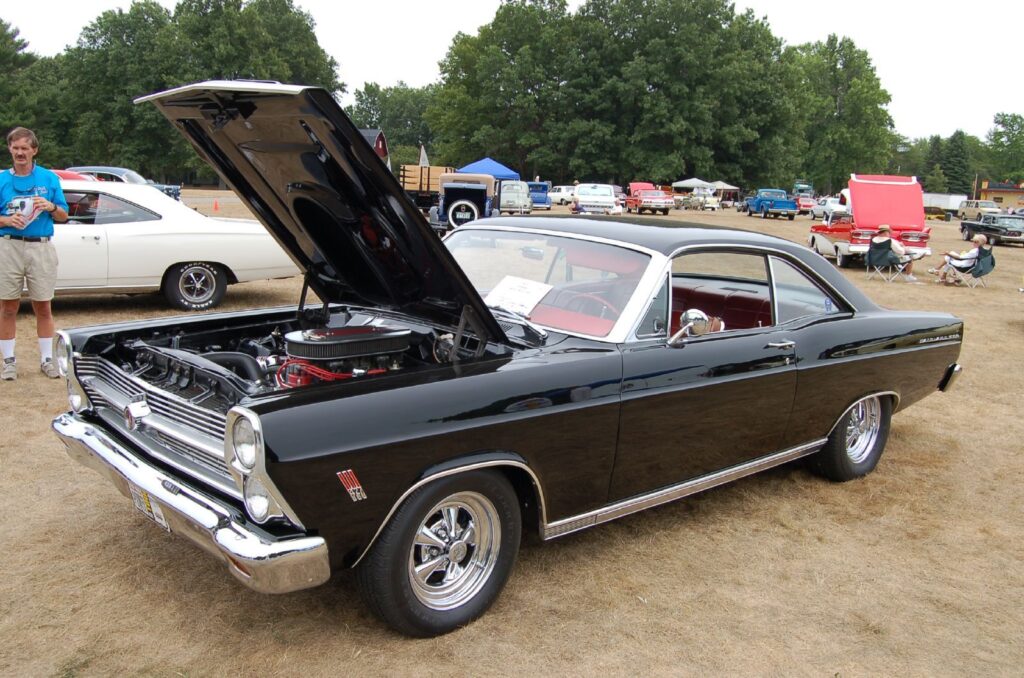
8. **Understand Air Conditioner Use**It’s a common dilemma drivers face: turn on the air conditioner and potentially burn more fuel, or roll down the windows and risk increased drag? According to the U.S. Department of Energy, using your car’s air conditioning can reduce fuel economy by over 25%. This significant reduction prompts many drivers to reconsider their cooling habits, especially when gas prices climb, leading them to believe that simply avoiding the A/C is the ultimate fuel-saving solution.
However, the choice isn’t always straightforward. While the A/C draws power directly from your engine, rolling down your windows, particularly at higher speeds on the highway, can also increase wind resistance and negatively impact fuel consumption. Chris “Moose” Pyle, an automotive expert with JustAnswer, explains that higher speeds dramatically increase drag, and open windows contribute significantly to this aerodynamic inefficiency, essentially eating up more fuel than you might save by foregoing the A/C.
The key lies in understanding where and when to make the switch for optimal efficiency. For city driving, where speeds are generally lower and stops more frequent, leaving your windows open is often the more fuel-efficient choice. Patrick De Haan, head of petroleum analysis at Gas Buddy, recommends this approach when you’re moving slower or idling more often. Conversely, when you’re cruising on the highway at higher speeds, it’s typically better to use your air conditioner and keep the windows closed to maintain optimal aerodynamics, preventing your engine from working harder against unnecessary wind resistance.
This nuanced approach to climate control ensures you’re not sacrificing fuel efficiency in one area while inadvertently losing it in another. It’s about finding that sweet spot where comfort meets economy, allowing you to stay cool without melting your gas budget. By making informed decisions about when to use your A/C versus when to roll down the windows, you can shave off noticeable amounts from your monthly fuel bill and feel the impact on your wallet.
Read more about: Unmasking the Culprits: 11 ‘Healthy’ Shampoos and Ingredients Secretly Causing Your Hair Loss

9. **Choose the Right Fuel Grade for Your Car**One of the most persistent myths surrounding fuel efficiency is the belief that higher octane premium gas automatically translates to better performance or improved mileage. Many drivers mistakenly upgrade to premium fuel, thinking they are giving their car a beneficial boost, only to find their wallet thinner with no tangible improvement at the pump. This common misconception leads to unnecessary spending for countless motorists, driven by marketing and outdated beliefs.
The truth is, using premium fuel in an engine that doesn’t specifically require it offers no additional performance or mileage benefits. Modern engines are precisely designed to operate optimally with a specific octane level, which is meticulously determined by the manufacturer and is typically listed inside your car’s fuel door or prominently in the owner’s manual. Frank Bisciotti, editor-in-chief at RealTruck, succinctly puts it: “Using premium fuel in an engine that doesn’t need it doesn’t boost performance or mileage, just your expenses.”
Your car’s engine control unit (ECU) is programmed to adjust to the recommended fuel grade and will not magically create more power or efficiency from higher octane if it’s not designed for it. If you put in a higher octane than necessary, the engine simply doesn’t fully utilize the higher resistance to pre-ignition, meaning you’re paying extra for a benefit you’re not receiving. Sticking to the manufacturer’s recommended grade ensures your engine runs efficiently, exactly as it was designed to, without incurring additional and entirely avoidable costs at the gas station.
It’s a simple, yet incredibly effective, way to avoid wasting money every time you fill up. Before your next trip to the pump, take a moment to check your owner’s manual or the inside of your fuel door. If your car doesn’t explicitly require premium fuel, there’s absolutely no reason to buy it. This small adjustment in your fueling habits can lead to significant savings over the long term, proving that sometimes, the simplest solutions are the most impactful.
Read more about: 12 New Cars Named ‘Best Buys’ for 2025: An Expert Guide for Savvy Shoppers

10. **Prioritize Regular Vehicle Maintenance**Beyond just the daily driving habits, the overall health of your vehicle plays a crucial, often underestimated, role in its fuel efficiency. Neglecting regular car maintenance can subtly, yet significantly, increase your fuel consumption and lead to more expensive repairs down the line. Think of it like your own health; regular check-ups prevent minor issues from becoming major problems that severely impact your performance. An engine that has to work harder due to neglected maintenance will inevitably burn more fuel than necessary.
One often-overlooked aspect is the quality and type of motor oil you use. While skipping an oil change won’t drastically impact mileage right away, consistently using the manufacturer’s recommended grade of motor oil can improve your mileage by up to 2%. This seemingly small gain adds up over time, contributing to better lubrication and reduced friction within the engine, allowing it to run more smoothly and efficiently. Regular oil changes, diligently adhering to your vehicle’s maintenance schedule, are fundamental to an optimally performing and fuel-efficient engine.
Another critical component for efficient fuel combustion is your spark plugs. These small parts are responsible for igniting the air-fuel mixture in your engine’s cylinders, and if they’re worn or fouled, they can lead to misfires and incomplete combustion, directly impacting your gas mileage. John Vorisek, founder at Repair Surge, recommends inspecting and replacing spark plugs and other ignition components regularly, emphasizing their criticality for efficient fuel use. Replacing them early, even before they fully fail, can prevent significant drops in efficiency and costly repairs down the line, saving you from headaches and higher fuel bills.
Furthermore, consider elements like proper wheel alignment and healthy oxygen sensors. Incorrect wheel alignment forces your tires to drag, increasing rolling resistance and reducing gas mileage, as Vorisek highlights. Similarly, oxygen sensors, which diligently monitor combustion efficiency, degrade over time and can cost you up to 15% in gas mileage if not replaced when due, often around 60,000-100,000 miles. Keeping a keen eye on warning lights, such as the check engine light, is also vital, as these often signal underlying issues that cause incomplete combustion and waste fuel, potentially leading to expensive catalytic converter damage if ignored.
Read more about: 15 Classic Cars You Might Want To Skip: An Expert Guide for Discerning Collectors
11. **Avoid Fuel Additives and Economizers**The market is unfortunately flooded with products promising miraculous improvements in gas mileage—from special fuel additives you pour into your tank to devices you install in your engine. These products often lure drivers with claims of boosting efficiency by significant percentages, preying on the desire to save money at the pump. However, the allure of a quick fix almost always leads to disappointment and wasted money, and in some cases, even damage to your vehicle.
The Federal Trade Commission (FTC) has issued a clear and unequivocal warning for consumers regarding these products: “claims by makers of devices and additives that promise to increase gas mileage are either false or grossly exaggerated.” After extensive testing of over 100 such products, the FTC found no evidence that any of them significantly improved mileage. In fact, Patrick De Haan, head of petroleum analysis at Gas Buddy, strongly advises skepticism, stating, “People should be suspect of any device that promises to increase fuel efficiency.”
Automotive expert Chris “Moose” Pyle further elaborates that if most of these products were legitimate and effective, car manufacturers would already be incorporating them into vehicles or recommending them with every fuel tank. He cautions that most offer “less than 3% gains and can potentially damage your engine or emissions system over time, causing repair bills that could be $1000 plus.” Beyond the financial waste, some engine-installed devices may even violate federal emission standards, creating legal and environmental issues that you definitely want to avoid.
Therefore, resist the urge to invest in these unproven solutions. Your money is far better spent on proven strategies like diligently maintaining your vehicle, adopting efficient driving habits, and leveraging legitimate rewards programs. Rely on credible advice and scientific backing, not marketing hype or questionable testimonials, to truly save on gas and protect your investment.
Read more about: Road Warrior’s Ultimate Guide: Unmasking 7 Gas-Saving Myths and Unlocking 7 Proven Strategies to Slash Your Fuel Bill by 20%
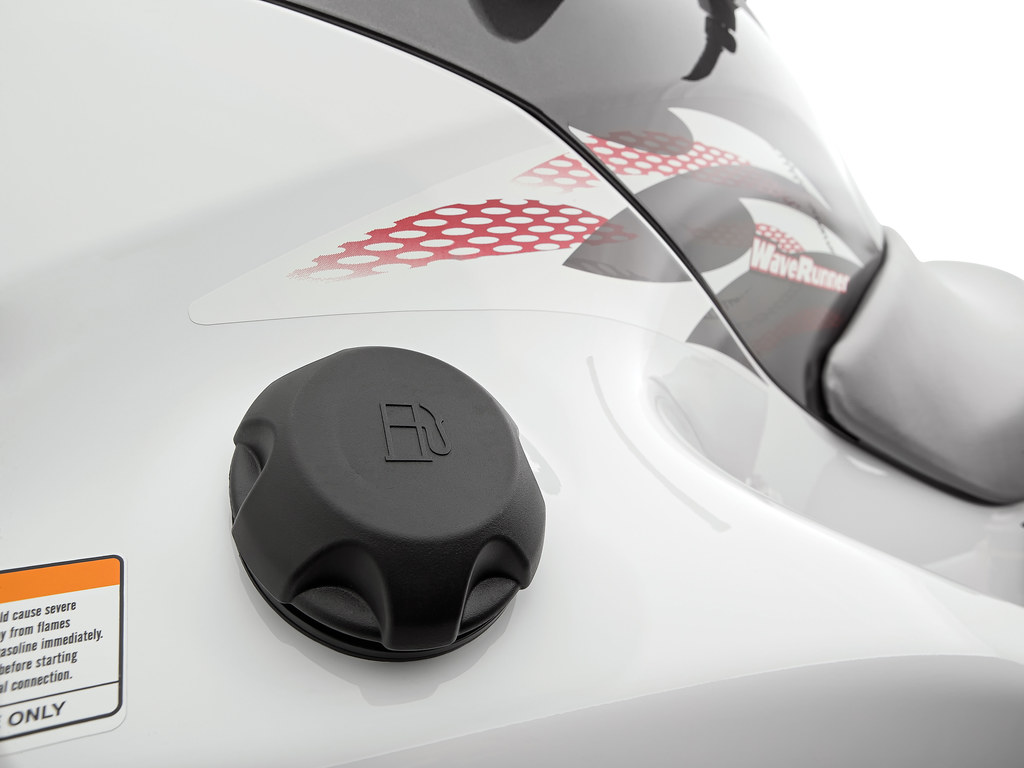
12. **Don’t Fall for the “Keep Your Tank Full” Myth**Among the many old wives’ tales about saving gas, one particularly persistent myth suggests that diligently keeping your fuel tank consistently full prevents evaporation and thus saves you money. The theory posits that the less air space in your tank, the less fuel can evaporate, implying that a constantly topped-off tank is a more economical tank. This idea often leads drivers to make frequent, small fill-ups, which can be inconvenient and, as it turns out, entirely unnecessary for modern vehicles.
While letting your gas gauge hover near empty is generally not a good idea for the longevity of your fuel pump, which relies on being submerged for cooling, the evaporation theory for fuel saving is entirely bunk in today’s cars. Modern vehicles are equipped with sophisticated vapor recovery systems specifically designed to minimize fuel loss due to evaporation. These systems efficiently capture fuel vapors and route them back into the engine to be burned, rather than allowing them to escape into the atmosphere as was common in much older car designs.
This technological advancement means that whether your tank is full, half-full, or nearly empty, the amount of fuel lost to evaporation is negligible and certainly not affected by how much air space is left. Investing extra time and effort to constantly top off your tank based on this outdated belief simply doesn’t yield any tangible savings on your fuel bill. Your time and money are valuable, and chasing phantom savings is a waste of both.
Instead of worrying about mythical evaporation losses, focus your energy on the strategies that truly make a measurable difference, such as combining errands into a single trip and cultivating smooth driving habits. These actions have a real, quantifiable impact on your fuel budget, unlike the phantom savings promised by an always-full tank, allowing you to see actual results.
Read more about: Road Warrior’s Ultimate Guide: Unmasking 7 Gas-Saving Myths and Unlocking 7 Proven Strategies to Slash Your Fuel Bill by 20%

13. **Debunking the Air Filter Myth**For years, drivers were advised, almost universally, to frequently replace their engine air filters as a crucial step to improve gas mileage. This tip stems from a time when older cars, which filtered air directly into carburetors, could indeed experience a noticeable drop in fuel economy if their air filter became clogged. The logic seemed perfectly sound: a cleaner filter means better airflow, which in turn translates to better combustion and efficiency for the engine.
However, modern vehicles operate on entirely different principles and boast significantly more sophisticated technology. Today’s engines are equipped with highly advanced fuel injectors and other cutting-edge technology that meticulously regulate the air-to-fuel ratio with extreme precision. A comprehensive study on gasoline engines conducted by the Oak Ridge National Laboratory explicitly determined that “dirty engine air filters do not affect fuel economy in modern vehicles.” This research directly challenges and debunks the long-held belief for contemporary cars.
While a dirty air filter won’t necessarily hurt your gas mileage in a modern vehicle, it can certainly lead to other performance issues, such as sluggish acceleration, reduced engine power, and potentially increased emissions. The car’s computer is intelligent enough to detect lower airflow and adjusts fuel delivery accordingly, preventing a direct mileage drop but often at the cost of responsiveness and overall engine health. So, while frequent replacement isn’t a direct gas-saving hack anymore, regular checks and timely replacement are still incredibly important for overall engine health, consistent power, and optimal performance.
Therefore, instead of focusing on air filter replacement as a direct gas-saving measure, consider it as an integral part of your overall vehicle maintenance to ensure optimal engine performance and longevity. This distinction is crucial for empowering you with accurate, actionable advice rather than relying on outdated information that no longer applies to the vehicles we drive today.
Read more about: The Widening Federal Budget Deficit: Unpacking the $2 Trillion Milestone and Its Economic Drivers
As we’ve explored, the journey to significant gas savings isn’t about one magic trick or chasing fleeting fads, but rather a robust collection of smart, consistent changes. From adjusting how you drive to understanding the true needs of your vehicle and confidently debunking common myths, every small decision adds up. Embracing these actionable strategies empowers you to take control of your fuel budget, reduce your environmental footprint, and keep more hard-earned money right where it belongs: in your wallet. So, go forth, drive smarter, and enjoy the hundreds you’ll save!

